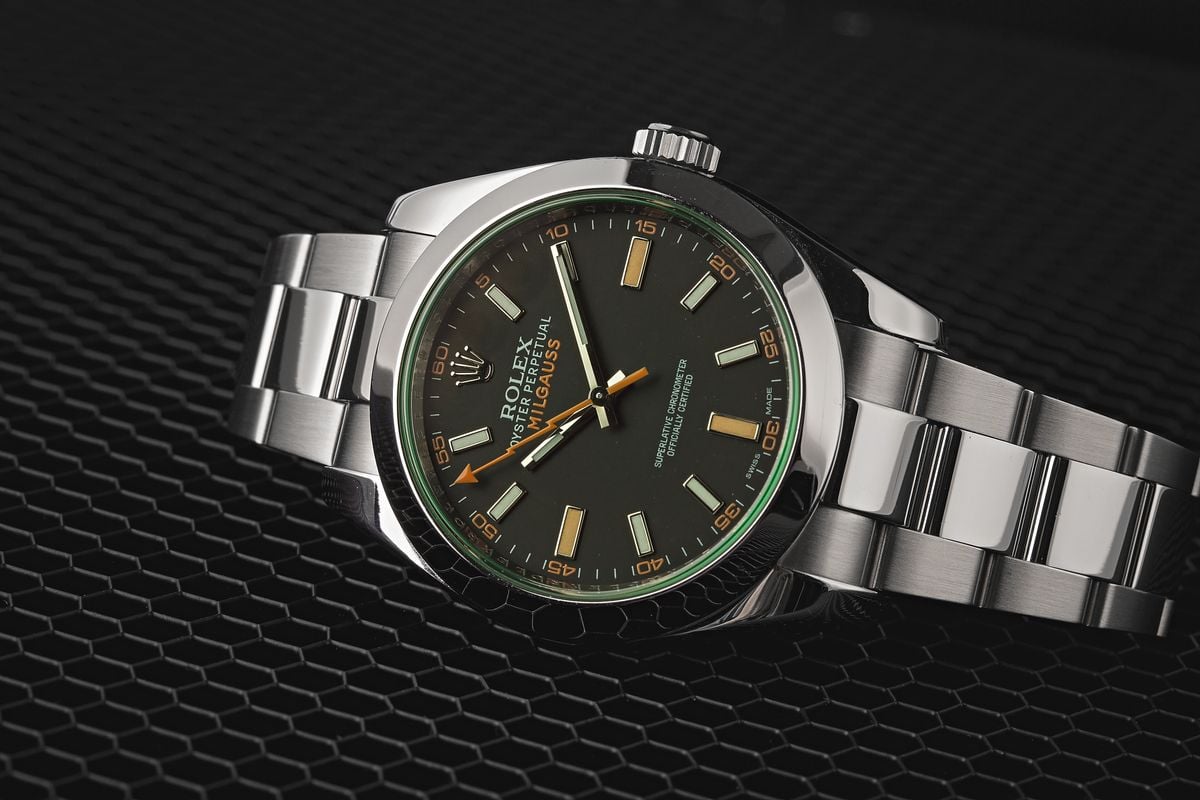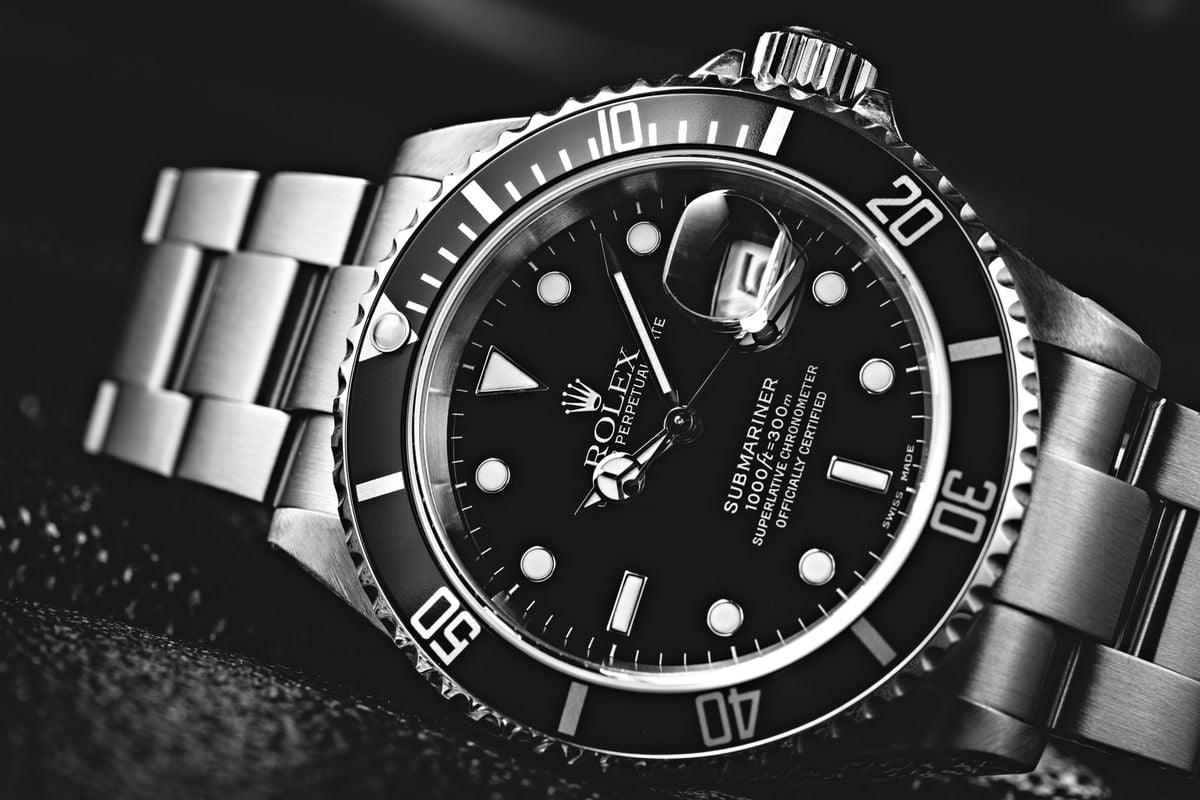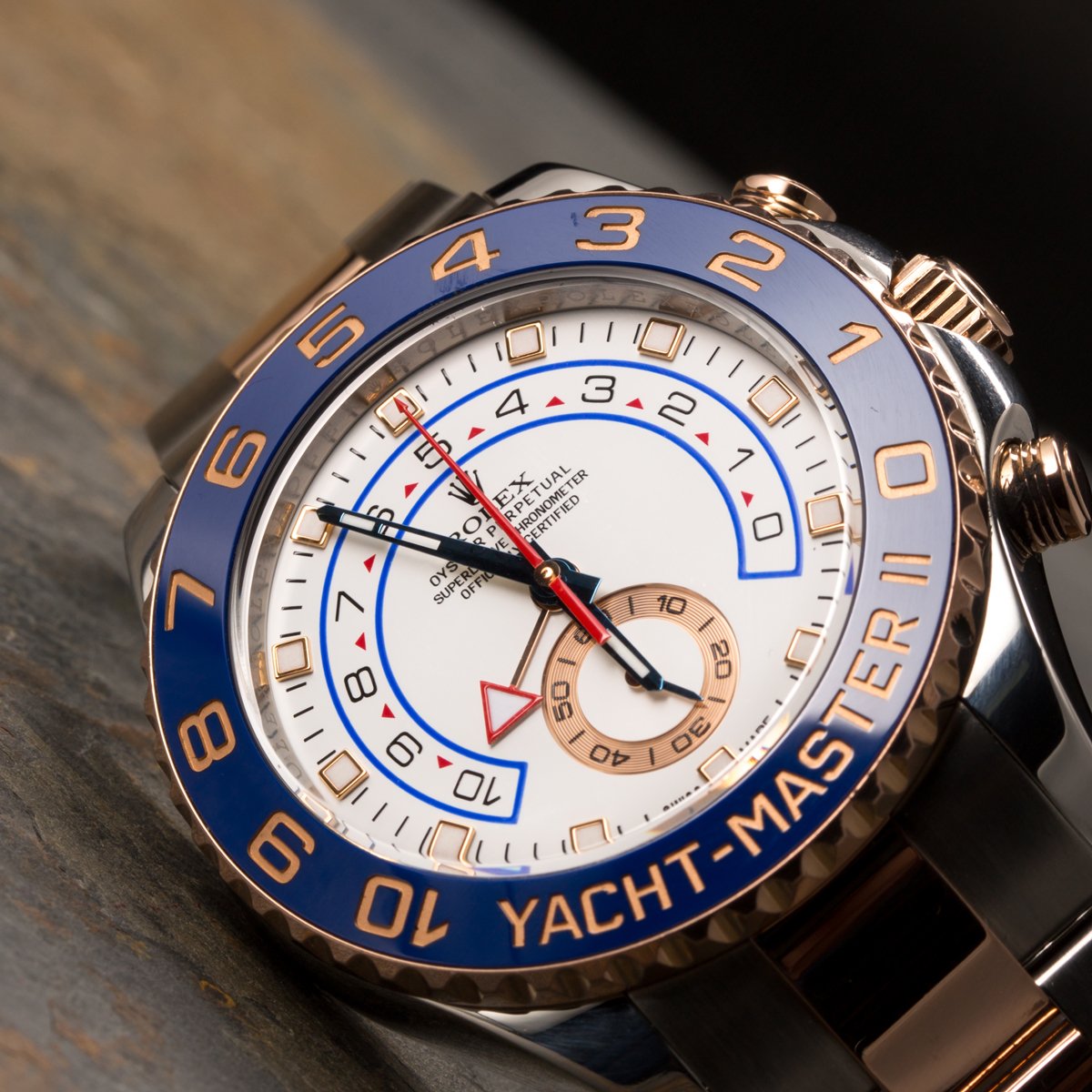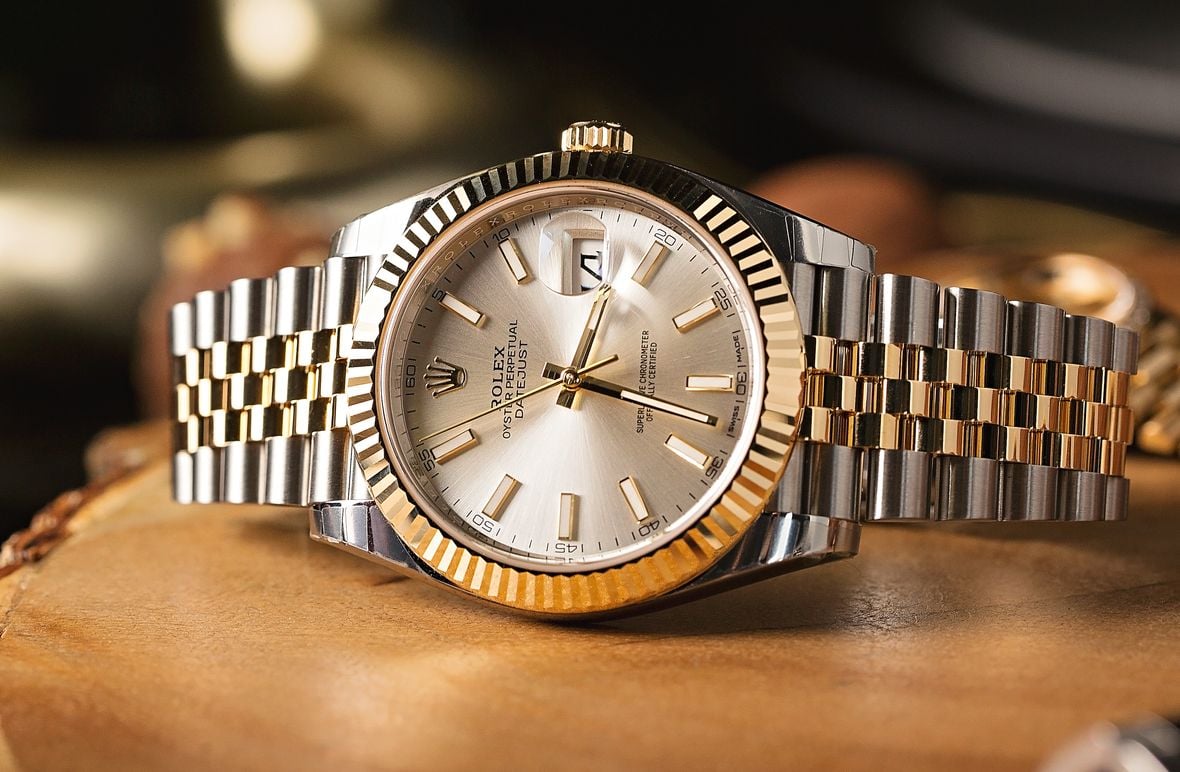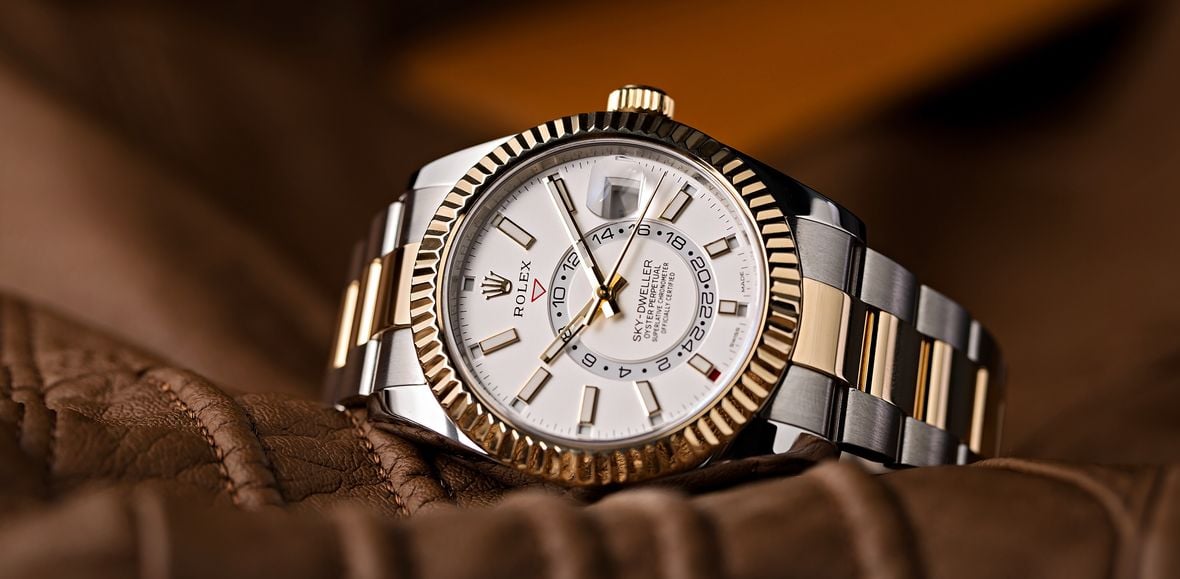Is the Rolex Milgauss a Good Investment?
It is well known that in the world of luxury watches, nothing holds its value quite like a Rolex. The reputation of the brand is so incredibly strong and the quality of its output so high, that Rolex’s models enjoy some of the best investment performance in the entire industry. Of course, some do better than others, and their investment performance is based across a number of different factors.
Things like rarity, popularity, and condition all play an enormous role in the overall value of a watch and are the reasons for some of the sky-high costs associated with the likes of classic Daytona, GMT-Master, and Submariner references. But what about those names from the brand which have traditionally been lost in the shadows of their more illustrious stablemates?
There has long been a small medley of pieces collectively thought of as the ‘forgotten Rolex watches’ that are expertly built but underrated, and that have never enjoyed as much of the limelight as the brand’s big hitters. Watches such as the Air-King, Explorer, and Oyster Perpetual all qualify, but perhaps the most interesting, and unusual model – both from a collector and investment standpoint is the Rolex Milgauss.
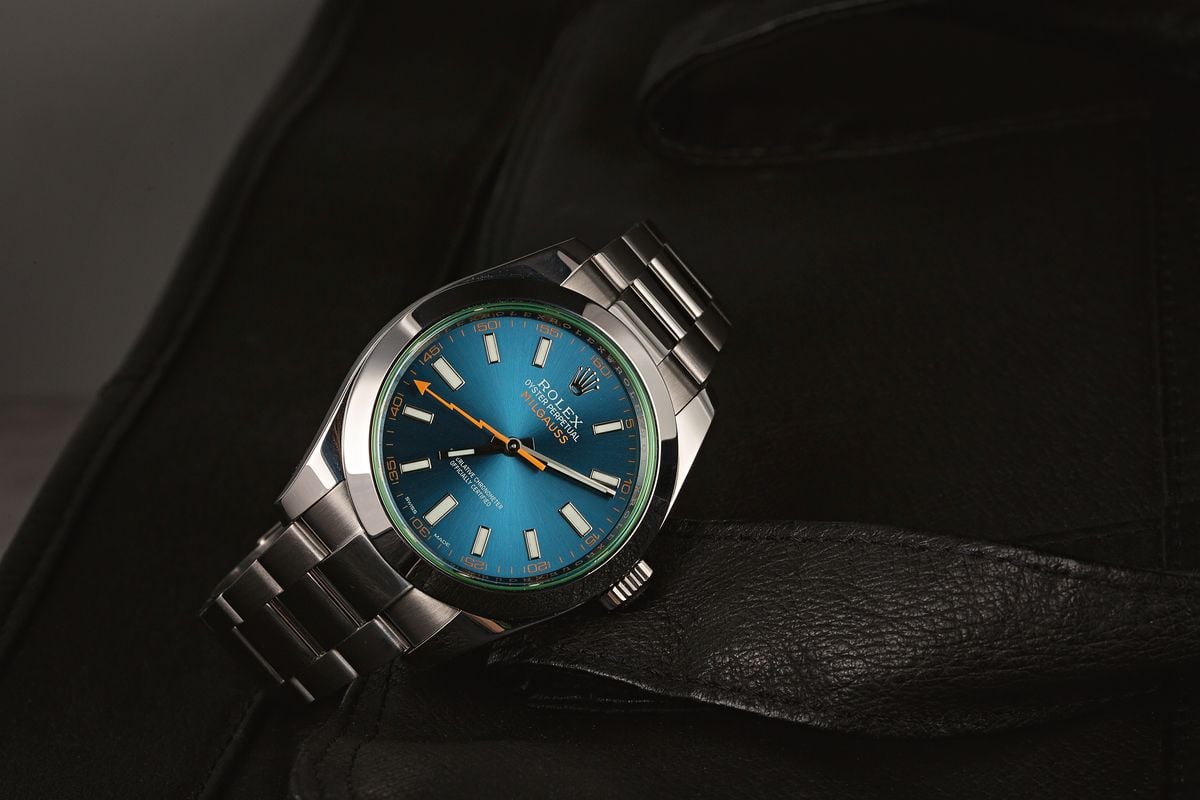
What is the Rolex Milgauss?
The Rolex Milgauss was first launched in 1956, during what was the busiest and most inventive time in the brand’s history. Its introduction followed on the heals the launch of the Explorer, Submariner, GMT-Master, and Day-Date – and therein lies the most likely cause for why it subsequently gets lost in the crowd.
Those other models all had highly attractive backstories or target markets; the Explorer was made to celebrate the conquering of Everest, the Submariner catered to the new craze for scuba diving, the GMT was for pilots and those traveling to exotic places, and the Day-Date was worn by leaders of industries, or countries. Next to all that, the history of the Rolex Milgauss was somewhat less exciting. It was designed for scientists, medical technicians, and those who worked in the presence of strong magnetic fields, the number one foe of mechanical watches.
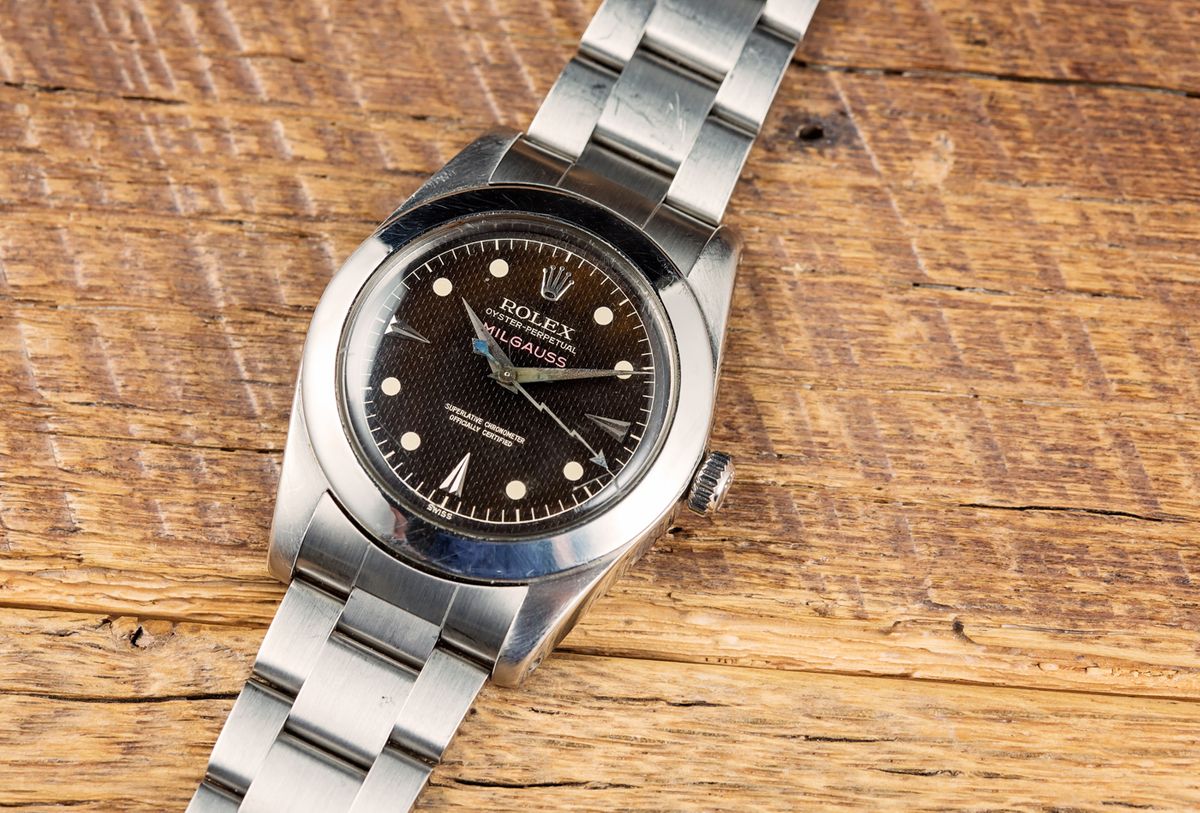
Through the use of a second, internal case, and with a dial made of soft iron, which together formed a Faraday cage, the watch was able to withstand electromagnetic forces of up to 1,000 gauss. In fact, that is where it derived its name, with mille being the French for 1,000, and gauss being the unit of magnetic flux density.
Impressive though it all was, Rolex Milgauss sales were rather lackluster, and many consumers opted for one of the brand’s high-profile sports watches. It was definitely a problem of image rather than aesthetics. The first two references of the Rolex Milgauss (the ref. 6543 and ref. 6541) were practically indistinguishable from the early Submariner watches, even down to their black rotating bezel. However, the second model was given a unique design flourish in the shape of a lightning bolt seconds hand, but it still didn’t seem to help.
While Rolex’s dive watch flew off the shelves, its scientist’s model stalled. In 1960, the ref. 1019 emerged with a different stylistic identity. A plain and simple three-hander, the rotating bezel was swapped for a stationary polished replacement and the seconds hand reverted back to a more traditional shape. After that, the Rolex Milgauss was more-or-less ignored, with the ref. 1019 limping on unchanged for some 28-years before the brand cut its losses and retired the model completely in 1988.
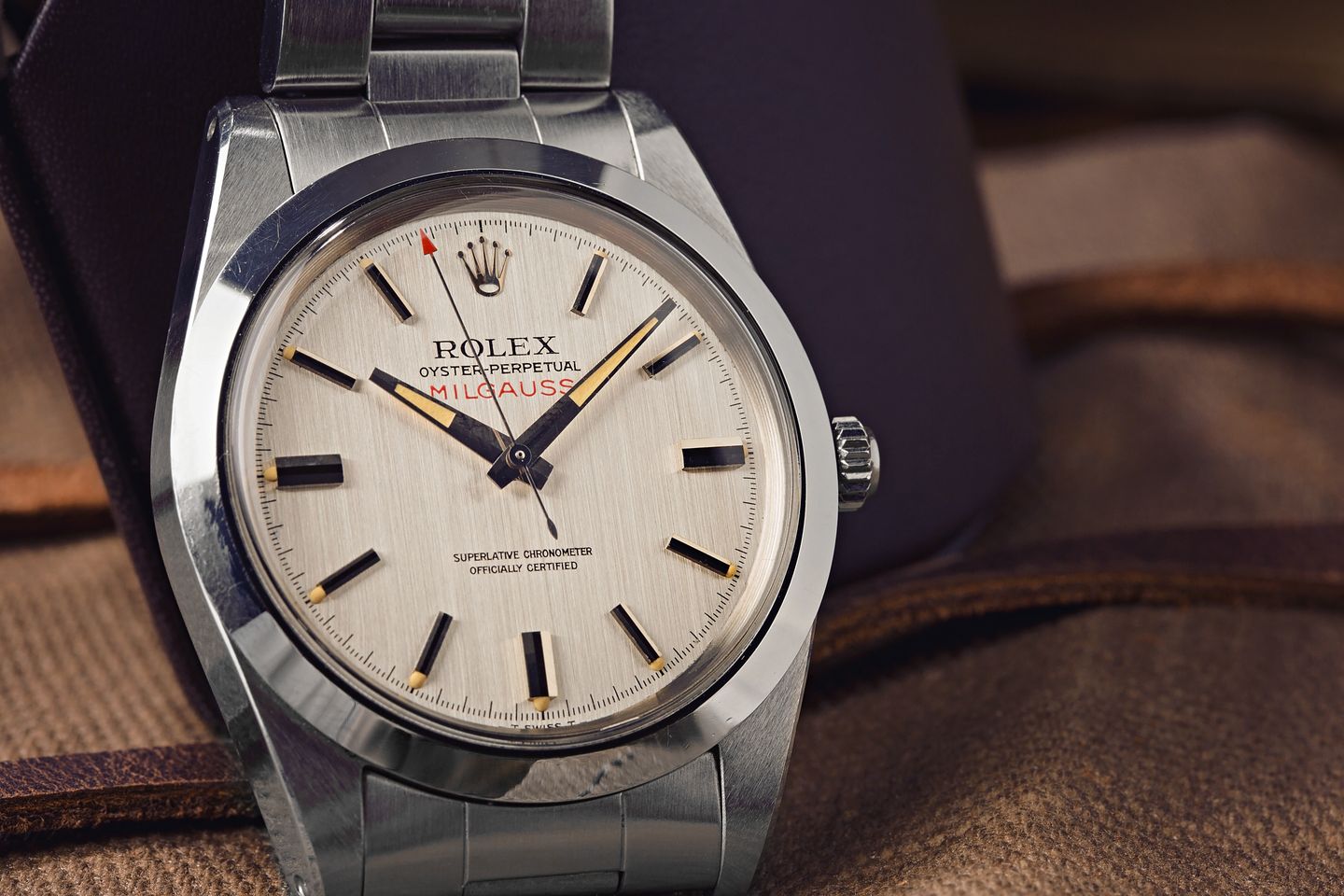
The Return
To everyone’s surprise, the Rolex Milgauss was brought back two decades later in 2007, to coincide with the completion of CERN’s Large Hadron Collider, the world’s highest-energy particle accelerator. It was launched in three versions which, on paper, should really seal its place among the best of the future appreciating assets. First off, the watch is made only in steel and is part of the brand’s Professional Collection – and stainless steel Rolex watches, particularly sports and professional models are by far the most sought after, both contemporary and vintage.
Secondly, the new releases contained enough quirks and innovations to make them stand out in a crowded space. That initial trio consisted of black and white dialed versions, along with a second black dial piece (the ref. 116400GV where GV stands for Glace Verte), which featured a revolutionary green-tinted sapphire crystal. This was the first (and so far only) time that Rolex ever produced a colored glass, and the process was reportedly so complex that the brand hasn’t even bothered patenting it, confident that no one else will be able to replicate it.
In 2014, the white dial Rolex Milgauss was replaced with the Z-Blue. This model features a sunburst dial of electric blue which, together with the green sapphire crystal, the happily reinstated bright orange lightning bolt seconds hand, and the minute track in the same color, make it one of the most vibrant watches in Rolex’s entire portfolio. All the new references share a 40mm case and movement (the Cal. 3131) with the latest Air-King models, and now also contain naturally antimagnetic components such as the blue Parachrom hairspring.
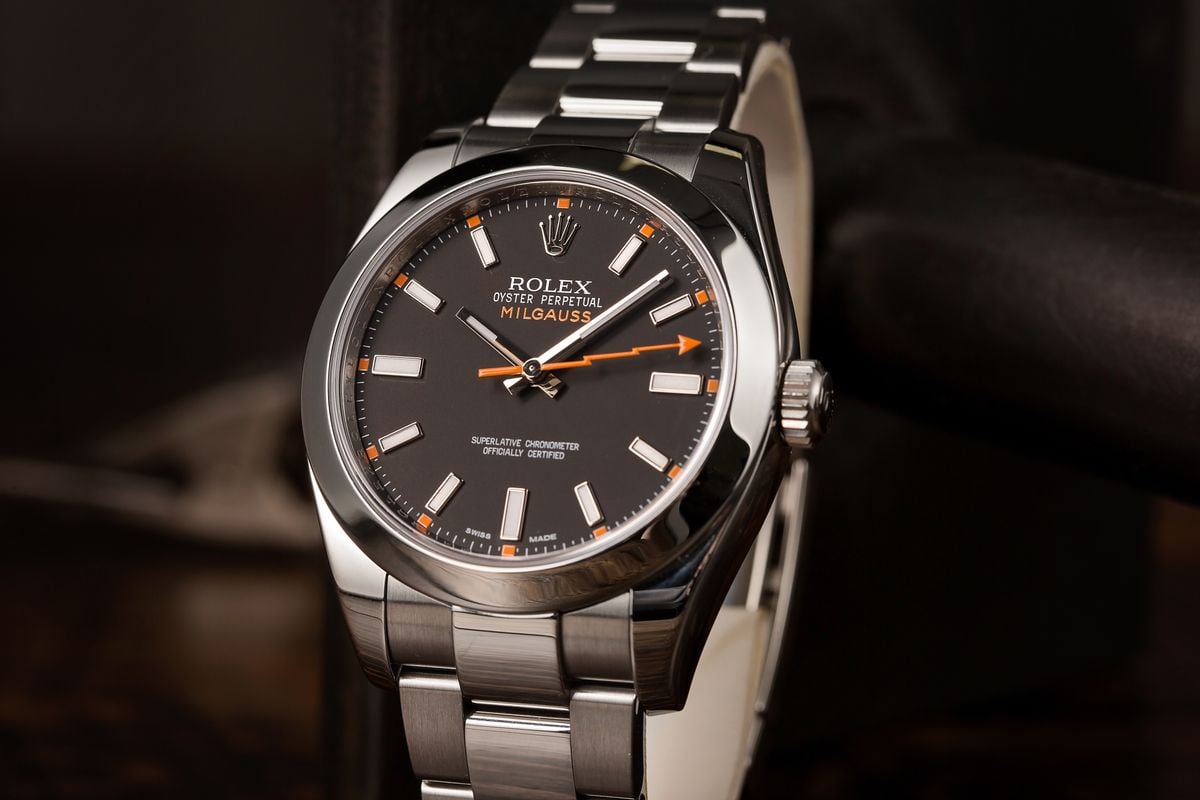
Is the Rolex Milgauss a Good Investment?
Anyone who has recently tried purchasing one of Rolex’s popular sports watches knows how frustrating a trip to an authorized dealer can be. Basically, unless you are a longstanding customer or just very lucky, you’re not getting one without a substantial amount of time sitting on a waiting list.
The shortage of Rolex sports watches has resulted in many collectors and enthusiasts focusing on alternatives, and the Milgauss has started to benefit from it. Although still vastly undervalued, the watch has experienced soaring popularity within the last few years on the pre-owned market and shows no sign of slowing down.
The Z-Blue dial variant, probably the most popular of the new models, is already trading hands for decent premiums through independent retailers, but the original black and white dial versions (without the green sapphire crystal) still represent something of a bargain. The white-dial piece, in particular, could well be worth serious consideration.
In addition to being a beautiful watch, it offers a unique aesthetic among the various Milgauss models, and the fact that it has been discontinued will only work in its favor in the years to come.
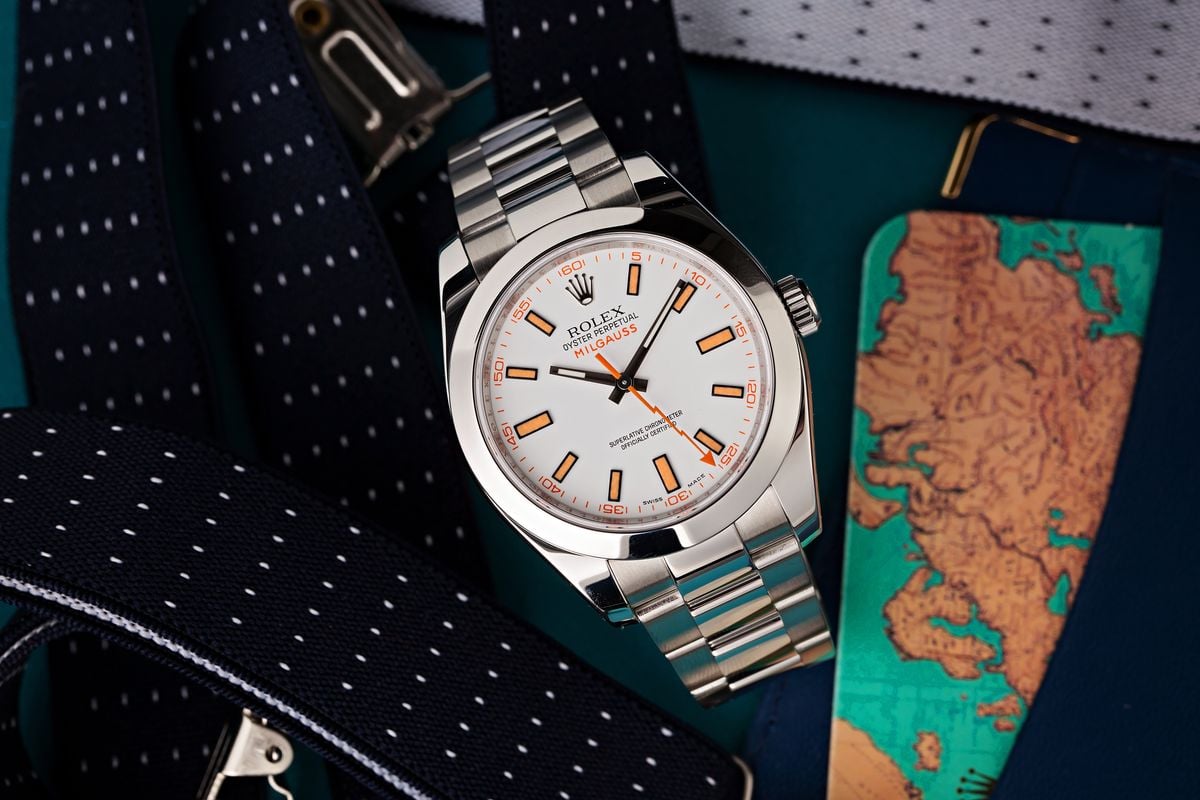
And then there are the vintage Rolex Milgauss references. These models can often attain some dizzying values whenever they surface at auction. Only around 150 examples of the original ref. 6543 Milgauss were made, meaning it is always something of an event when they come up at auction.
One sold in 2017, for example, for 271,500 Swiss Francs. The follow-up, the ref. 6541, is slightly more plentiful, but still incredibly rare and highly coveted. Sotheby’s recently dropped the hammer at $150,000 for one in excellent condition.
The long-running ref. 1019 that replaced the ref. 6541 is significantly more attainable with prices hovering around $25,000 to $35,000 for most examples; however, there is one particular variant that is especially rare. In the 1960s, scientists at CERN requested that Rolex produce for them a handful of ref. 1019 watches with no luminescence on the hands or indexes at all.
The tritium that was being used at the time, although far safer than the former radium, was still radioactive and at a high enough level to disrupt some of the sensitive equipment being used in the labs. These lume-less models have become known as the CERN dials, and are some of the most desirable examples from the entire Milgauss family.
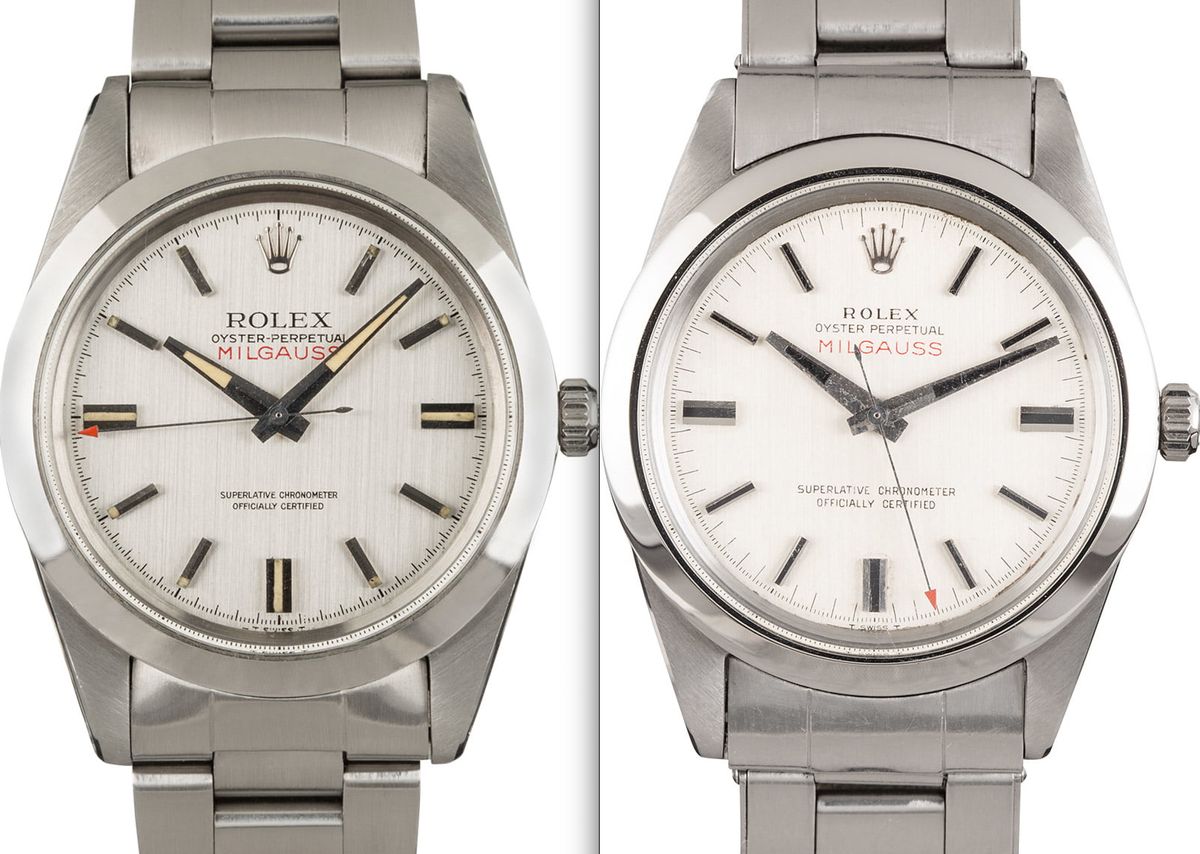
Overall, the Rolex Milgauss represents a great investment, especially considering the current shortage in supply of stainless steel Rolex Professional watches. New models are still available at credible prices, and the range as a whole has gone from cult classic and started venturing into the mainstream.
Their stock is destined to keep rising, and getting in sooner rather than later is definitely advised. The current-production Milgauss watches represent some of the brand’s most colorful models ever produced, and offer a significant departure from the traditional Rolex aesthetic. There is even a rumor of a facelift coming across the series at this year’s Baselworld (we’ll keep you updated).
As for the vintage models, the reference 1019 is the most abundant (excluding CERN dial versions), but will only get scarcer (and so more valuable) as time goes on. Prices for Rolex watches have been steadily on the rise for a number of years now, and while certain models like the Submariner and Daytona have long been popular favorites among collectors, others like the Milgauss, which have historically been underrated, now represent some of the best investment opportunities within the entire Rolex catalog.
It has taken a long time, but the antimagnetic watch built for scientists and technicians is now finally enjoying its time in the sun and should be at or near the top of the list for any collector with one eye on future gains. Learn more by visiting our Rolex Milguass buying guide.
